It has been reported in Japan that Tokyo is finalising its policy on how to jointly develop the engine of its upcoming F-X fighter with Britain.
The Mitsubishi F-X is a sixth-generation stealth fighter in development for Japan and it is the nation first domestically developed stealth fighter jet. It is hoped that the aircraft will replace the Mitsubishi F-2, a design based on the F-16, by the mid–2030s.
According to the report here:
“Several government officials have revealed. The government wants to solidify the framework of cooperation by March next year. A prototype will be manufactured from 2026, with the aim of starting flight tests in the 2030s. The UK will participate in the development of the air intake for jet engines and the area near the exhaust. These parts also have importance closely related to the stealth performance of the aircraft and the overall shape.”
It was also previously reported that Rolls-Royce will partner with Japan’s IHI Corporation. According to Asahi here.
“Anonymous Japanese officials told the news outlet that Japanese Prime Minister Suga spoke on the issue with British Prime Minister Johnson during the G7 summit last month. At the end of June, officials from Japan’s Defense Ministry travelled to Britain for talks on the issue. Britain’s Rolls Royce is currently involved in the Tempest program as well.”
The report adds:
“According to several Japanese government officials, an exchange on joint engine development was held at a meeting between Prime Ministers Yoshihide Suga and Johnson at the G7 Summit held in the United Kingdom in June.”



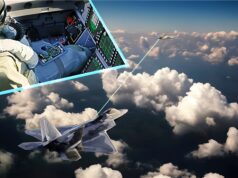
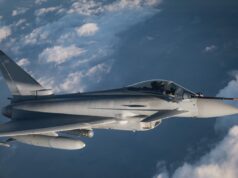
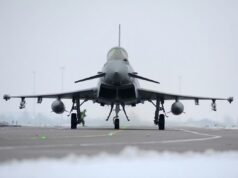
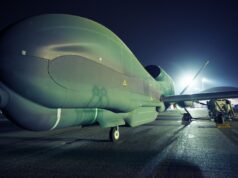

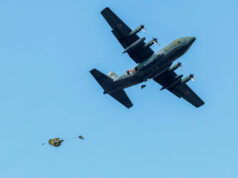


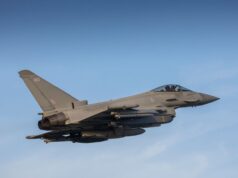

Fine I will say it. We will beat the NAZI’s this time then. “with the aim of starting flight tests in the 1930s”. If it’s for the 1930’s should we still be helping our Asian friends? Great mates now but the 1930’s well?
what are you smoking, Chaz?
Must be some strong stuff.
😆☝️
The Japanese were our allies in WW1, my Grandfather was rescued by a Japanese destroyer (Katsura) in the Mediterranean in 1918 when his troopship (Leasowe Castle) was torpedoed by U-51. The alliance was continued after the war but was put under strain at the Paris Peace Conference when Britain (with significant Australian urging) refused to a vept Japan’s proposed ‘Racial Equality Clause’ for the League of Nations, and was finally broken off at the insistence of the Canadians and the Americans. The distrust created by Britain and Imperial behaviours, as well as how we collapsed the Treaty, were a leading cause of Japanese involvement in WW2. Basically we mistreated and abandoned a faithful ally in the hopes of propping up the ‘White Man’s Empire” and getting some scraps from America’s table. Japan entered the war on Britain’s side promptly in 1914, Japanese officers aboard British warships were casualties at Jutland in 1916, Japanese warships served in the Mediterranean and there is a memorial at the Kalkara Naval Cemetery to the 72 Japanese sailors killed in action escorting British vessels.
Good news. There is potential for a lot of defence industy working together (and cost sharing) with the Japanese, to both our benefits, particularly with regards the Tempest program.
Good Lord! A deadline of next March. That sounds immediate enough to actually have an effect. How refreshing.
Japan has an incredibly high tech industrial base. It surprises me they need or want outside help
Current Japanese aircraft are powered by US-designed engines. No doubt, they wish to develop their own design for the F-X and have decided to obtain assistance from Rolls Royce.
In the civil aero sector Japanese industry already has very close ties with Rolls Royce. MHI is a risk sharing partner and supplier of assemblies on a number of Trent programs. Given also the specific UK contributions to F35 this ‘new’ partnership is not really surprising.
Ultimately aero engine development is extraordinarily expensive and complex so the market is completely dominated by the ‘big three’. Effectively, other NATO aligned nations (including even France and Germany) have a choice of just two nations as a main tech partner.
Rolls Royce also supplies engines for the Japanese Navy’s newest ships.
I think it is all part of the anti-CCP alliance building process and needs to be encouraged. A new SEATO is forming. It’s going to have sharp teeth and a high level of technical commonality.
True but they have a lot of gaps in their military industrial capabilities that previously they have relied upon from outside (predominantly) US. They now realise one that they need to double their defence spending, acquire more offensive capability and in so doing not be so reliant upon living under the somewhat less reliable these days US umbrella with an increasingly threatening China and Russia roaming around their coasts. Remember much of their military potential was internally and externally restricted for decades post war and is still a controversial subject politically there but politicians are becoming more realistic in this new world. They need cooperation in areas like this to speed up military technology development and indeed take it to the advanced level that at least matches its adversaries. Getting in now as their preferred partner will undoubtedly offer great dividends as it is with Meteor already whereby we will get early access to technology that they will increasing excel in once their technological and production capabilities fully adapt to the military requirements. Even China struggles to replicate Western or Russian engine capabilities and imagine the investment they have been making for years.
Interesting, thank you
What’s interesting that India too has signed a development partnership with Rolls Royce, and like Japan will be getting Meteor (and indeed ASRAAM). I’m sure the Chinese are well pleased that their biggest neighbors on both sides are getting access all this top UK tech. Coincidence?…maybe, but a great strategic move by the UK if not!
It’s all part of strengthening an anti-CCP alliance.
The chi-coms cannot compete with a free world that works together. No matter how many belts and roads they build; technologies they copy or crippling financial traps they deploy in the third world. (Or pandemics they cause.) What many consider to be the CCP’s greatest strength is actually their greatest weakness, if exploited correctly. These cooperative exercises between like minded allies are a vital part of a winning strategy. With o without a weak US administration. Welcome to the 21st century Cold War.
The U.S. wouldn’t share their technology with the U.K. Japan needs to reach peak development quickly. Rolls-Royce are clearly the only engine maker of a friendly power willing to help.
The Japanese article linked goes further.
Hopefully this will give RR a big advantage when developing the power plant for Tempest with a good chance it might go into other airframes eventually.
Well that engine intake tech has been with the UK since Concorde days.
That was developed at Farnborough in the supersonic wind tunnels.
I wouldn’t normally reference the Daily Fail but there are some beautiful photos in the article.
https://www.dailymail.co.uk/news/article-2762578/Photographs-rare-glimpse-historic-wind-tunnels-Britain-s-earliest-aircraft-developed.html
His Instagram page is
https://www.instagram.com/p/CXolTIANsuk/
The engine intake is absolutely part of the engine and engine management system: cannot separate them as it is critical to entry airflow being right as well as maintaining stealth.
Fighter jets are designed around their engines, with a common engine and ducting system a sizeable chunk of the airframe is going to be common between the two designs.
Every time I think about it I keep coming up with the possibility of the UK and Japan joining the Tempest and F-X programs. In many ways the two nations have a lot in common. Both are Island nations with political, ecconomic and military enemies off shore. Although the threat to Japan is much closer to their borders then the potential threat to the UK. Both nations have the technical knowhow to go it alone but not a large enough internal market to cover the cost. So as I said it would make good sense to have a joint project with Sweden who often think outside the box and Italy it would make a good partnership.
The point of Tempest isn’t to develop a mass production fighter, although it might lead there. The point is to develop the technological capability to develop the fighter. That gives us options. Even if we decided to throw in our lot with the US again, unless we brought technical capability to the table we’d not get a reasonable deal.
Killing Tempest would be a stupid move.
Probably stating the obvious, but why aren’t the UK not working with Japan to develop the next joint combat aircraft? Could be a win, win on many fronts, and the artists impression looks the part
For Japan F-X or F3 is about developing domestic aerospace design and manufacturing capability (with the national champion being Mitsubishi) to advance their own aviation sector, over the last decade they have financed a lot of pure science to lay the ground work for advanced domestic aircraft development.
Japanese worked with the US to develop an F-16 variant manufactured domestically, the F2, but they didnt share as much proprietary tech as promised so a lot was US black box systems and didnt advance their own aircraft design and production capabilities, with the F-35 Japan wanted to self-certify its own weapons and made a formal request but the US refused to share the code for the fighters OS with them (only partner they have done with is the UK). So this time around with F3 Japan decided they want to have their own indigenous fighter program to maximise domestic economic value and stop the US black boxes working their way in. However the US put a lot of diplomatic pressure on them to buy american or they would stop military aid/sales and basically forced them to appoint a US company as overall program manager for their domestic fighter program. Japan has been trying to work with the UK as much as it can however side stepping their US ‘advisors’.
uk will assist with japan to jointly research making intakes and exhaust areas 6th gen stealthy, given we have started work on the tempest.
UK & Japan are also cooperating on radar & air to air missile development.
Natural allies.
I have a great deal of time for the Japanese.
When you say this I can’t think back to WW2, which is still in the minds of many of my parents’ generation, and they have a totally different outlook on it.
Things change of course, and 76 years have passed…
Yes, I think it was in the 90s when one of their officials, or was it the emperor, visited Buckingham Palace and my friends Dad was with others lining the route who turned their backs on the motorcade as an insult.
I find them a respectful people myself, compared to many many others!
They have their own unique cultural sensibilities. If you look at the make up of the Japanese population, only something like 2% are foreigners. This tells us something about the mentality, surely?
That said, the few Japanese I have met have, as you say, always been respectful.
I wonder what the feeling is there of them still being ‘occupied’ so to speak by US forces? I bet there’s a lot of sensitivity about it.
As they basically dont take refugees and dont offer the ability of non nationals to stay in the country unless got a job the population is very much ethnic japanese only. As they are seeing though this is causing issues with an ageing population at quite a rapid rate.
Ironically, we were allies up to the 1930s and in many ways you are right but what they did in WW2 is hard to forgive.
I think we need to look at them as a good way of supporting us in maintaining our sovereign high tech aerospace capabilities. A certain level of independence from the US is critical for the U.K.
Wonder how it compares to Tempest ? Any one know what happened to the deal the UK government under MAY with Turkey for a new fighter jets 🤔
I would think the Japanese and UK Gen6 designs will end up being quite similar.
We both have similar requirements, island nations with vast areas of airspace to patrol, radius of action etc.
The design factors of two (possibly identical engines in both types), internal bays, fuel for range and low observables will dictate a similar layout and size and weight.
The engines are an absolutely key technology for Tempest and it really helps put Tempest on a firm setting.
Re the Anglo Turkish fighter, the project was stillborn after Turkey pivoted towards Russia…
John, I do wonder if the Turks may re-asses their geo political thinking, given the financial mess they are in. It would be good to see more progressive politics and a return to the Tempest project.
I’m not sure Klonkie, the Turks really marked their card with their selection of the S-300 and resolute refusal to back down.
Having F35 withdrawn from Turkey will have wider long term implications that go far beyond F35 membership for them down the road, a poor decision on Turkeys part.
When you consider Turkeys strategic position within NATO and it’s Geo Strategic position between Europe and Asia, it had better decide which side it’s on, confidence has been shaken, at least as far as the West is concerned and having them involved in any high end defence system, is just unacceptable now.
They have brought it on themselves and proven unreliable …
You raise some good points here John – thank you
Erdogan is hardly a stable individual and seems to change his mind very quickly on what he wants to do, now hes a defacto dictator and cant be removed Turkey is very much stuck with him.
At some point they will bite off more than they can chew and get burnt, they are meddling in lots of areas and no doubt will over step the mark worse than when they shot that russian fighter down.
I think the UK would like Japan to merge F-X with Tempest, but not quite there yet. This is a step in the right direction.
Anyone have a view or thoughts on possibly including India into this project?
Problem with this is that India is involved in military projects with Russia, eg Brahmos etc and buys lots of Russian hardware. Maybe too risky for information/data to be passed on?
A valid point SORM, thanks for that
Didnt a story appear at some point when they took delivery of a latest Russian nuclear submarine that a US general was pictured leaving it?
I hope the cooperation extends much further than engine technology. There is no argument that Japanese technology is equal to our own. Being so close to both CCP occupied mainland China and Taiwan. Their air force is likely to be on the front line in future wars.